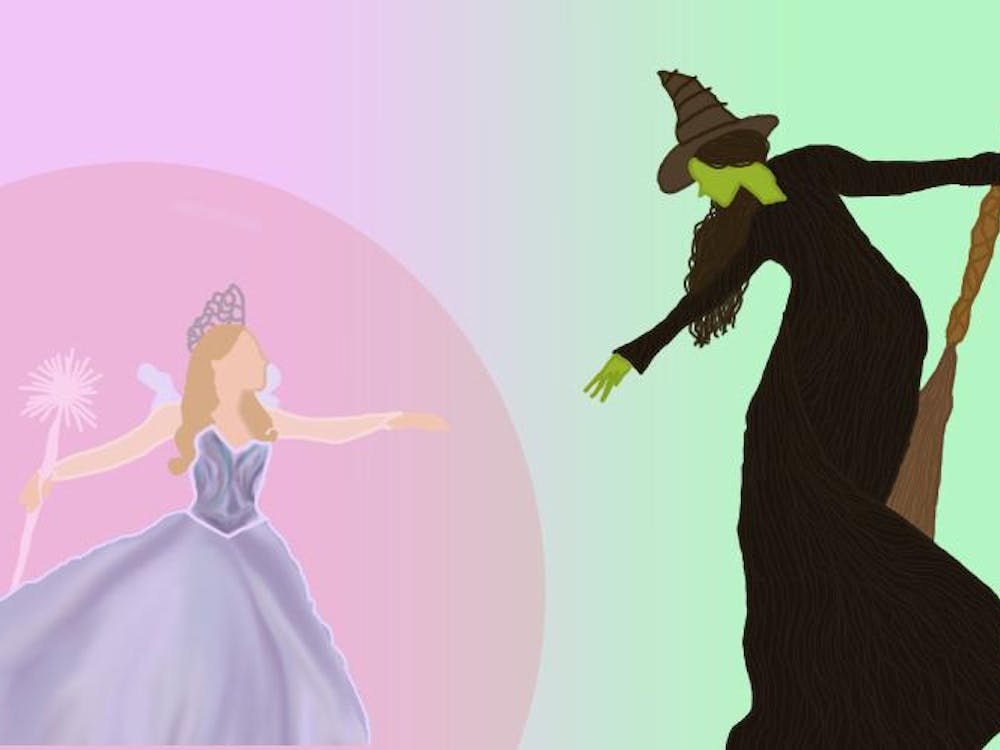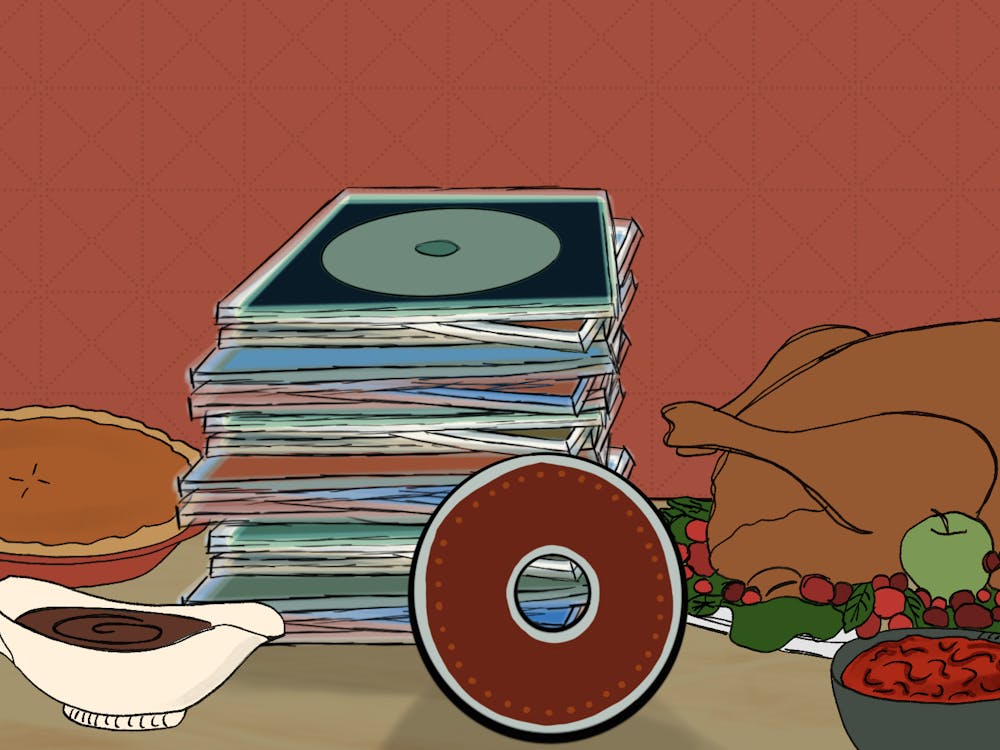There is something distinctly urban about King Krule’s music. Not “urban” in the pejorative context the word is sometimes used in to describe black culture. Rather, the oeuvre of King Krule is urban in the sense that it often seems to embody the specific sensory experience of city life. On some level, it all comes down to his voice. He sings in a coarse but sonorous growl, which poignantly evokes the simultaneous savagery and majesty of the human tapestry that is the metropolis.
However, the aura isn’t just derived from how he sings, but what he sings as well. His lyrics are intricately layered eloquent cyphers, reminiscent of the way that daily life in the city can often feel as though one is existing on a singular miniscule plane of subjectivity — in the midst of innumerable anonymous others.
Listeners can also hear the presence of urbanity in the production with a cavernous cacophony of brooding noise, which is as much an organic extension of traffic, streetwalkers and the subways as it is a form of musical artifice. Put concisely, “the King Krule sound” is an encapsulation of the cityscape’s grimy underbelly in all its dilapidated yet richly cosmopolitan glory.
In King Krule’s latest studio album released Friday — “The OOZ” — the uniquely urban lens of Krule’s music is applied to ever darker regions of the human spirit. This makes sense given the personal context of the project. In 2016, Archy Marshall, the gaunt 23-year-old behind the King Krule persona, went through a tumultuous breakup. His response to this heartbreak was to forge his emotional distress into a musically viable form and, by doing so, allow himself closure. And thus, “The OOZ” was born.
The artistic process of catharsis is in fact where the album’s title originates. According to Marshall, the word “ooz” is meant to signify “The s—t you do subconsciously … Like the snot, the earwax, your spit, your jizz, your piss, your s—t.”
In other words, the idea of “the ooz” is meant to frame life as a process of daily detoxification, the perpetual expulsion of physical, spiritual and psychological detritus.
“Ooz” also happens to be an apt descriptor of the album’s listening experience. “The OOZ” clocks in at a formidable one hour and 17 minutes, and the tracks on the album are produced in such a way that the beginnings and endings of individual songs often run into one another. With these two facts in mind, it seems that listening to “The OOZ” from beginning to end — in one sitting — is the best choice. This is certainly a bold choice on Marshall’s part, given the hit single-oriented direction towards which popular music has increasingly turned.
Further reinforcing “The OOZ’s” general ethos of esotericism is its refusal to adhere to neat genre delineations. For example, on the album’s opening track, “Biscuit Town,” King Krule’s delivery is hip-hop inspired, largely atonal and lyrically conveyed via couplets — in the mode of most rap music. Conversely, in tracks likes “Dum Surfer” and “Half Man Half Shark,” Krule adopts a guise much closer to the post-punk identity he became famous for on his 2013 album “6 Feet Beneath the Moon.”
Far removed from either one of these sonic tropes are the two “Bermondsey Bosom” tracks, a spoken word ballad detailing a romance between a man and a woman in the “city of parasites.” The story is told twice between the two parts, first in Spanish in “Bermondsey Bottom (Left)” and then in English in “Bermondsey Bottom (Right).”
In spite of how far-flung King Krule’s tonal references are across his album, his themes remain relatively consistent throughout. Whether rapping, singing, growling or moaning, the same types of desolate imagery are employed to convey the impression of a soul compromised by personal tragedy. In the second song on the album, “The Locomotive,” the full extent of the damage done to Marshall’s mind, body and spirit is showcased by the following — “Now it’s just for the wait / And how unjust is this weight / My back was so broken / Tear me apart, pull me open / (Look inside) See the corrosion / The Tannoy spoke my name / This vessel was delayed.”
In the span of just seven lines, Marshall considers his own mortality, laments at the broken state of his body, analogizes his damaged psyche to an acid burn and finally compares his life to a boat cast adrift by the elements. This is King Krule’s rock bottom, or in Marshall’s words, his “biscuit town” — a place where hope is but a faint glimmer in the distance.
For the next couple of tracks in “The OOZ,” King Krule recounts the incidents that led him to his existential midnight. In “Dum Surfer,” King Krule hustles a monied scion — the titular “dum surfer” — in poker, picks up a foreign girl, gets into a taxi accident and then reflects on the sorry state of his life. In “Slush Puppies” and “Logos,” Marshall provides additional context surrounding the dissolution of his past relationship, as well as his overwhelming feelings of anguish during the breakup.
By the midpoint of the album, King Krule, while still in a profound state of melancholia, attempts to pick up the pieces of his fractured essence. In “Sublunary,” King Krule describes himself for three bars as being “made for sublunary” which can be described as a temporary or transient state. While King Krule immediately refutes this claim ad nauseam during the following lines of the song, there is now clearly a part of him which has begun the attempt to move on.
Over the course of the second half of the album, King Krule gradually comes to accept the reality of being by himself for the first time in a long while. In the narrative arc charted by “Lonely Blue,” “Czech One,” “A Slide In (New Drugs)” and “Half Man Half Shark,” Krule commences the slow climb out of his pit of isolation and depression. He first attempts to self-medicate with pills but eventually moves on with a new girl who makes him feel alive again in “Half Man Half Shark.” By “La Lune,” the album’s final song, King Krule has successfully managed to come to terms with his grief, although he intends to keep his ex-girlfriend “inside [his] heart.”
While calling “The OOZ” a “breakup album” may be a superficially correct statement, the term ultimately fails to do justice to the work’s multilayered imagery woven throughout. The King Krule depicted in “The OOZ” by no means exists in a vacuum. King Krule views his own breakup as being just an insignificant blip in the constellation of tragedies that make up the working class population of his native London.
Of course, this is just one secondary narrative running through the album out of many, and it would most likely take months — if not years — of careful listening to unpack them all. But such is the nature of “the ooz” — not an immediate or effortless process, but a daily ritual of decomposition and discharge stretched out over the duration of a lifetime.







